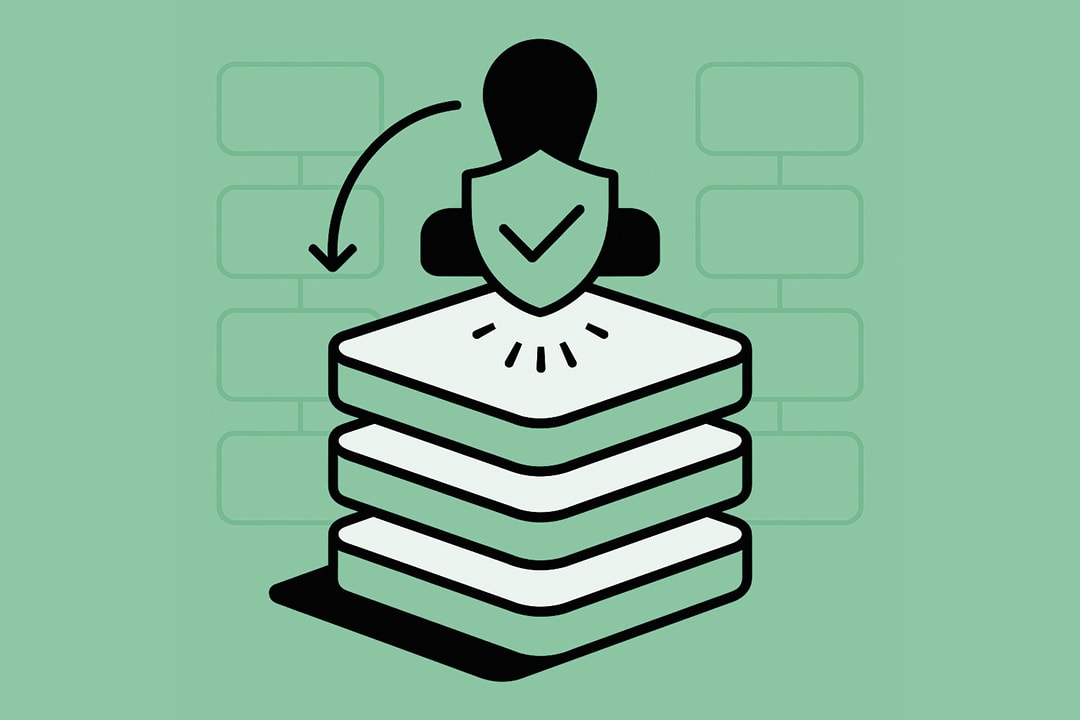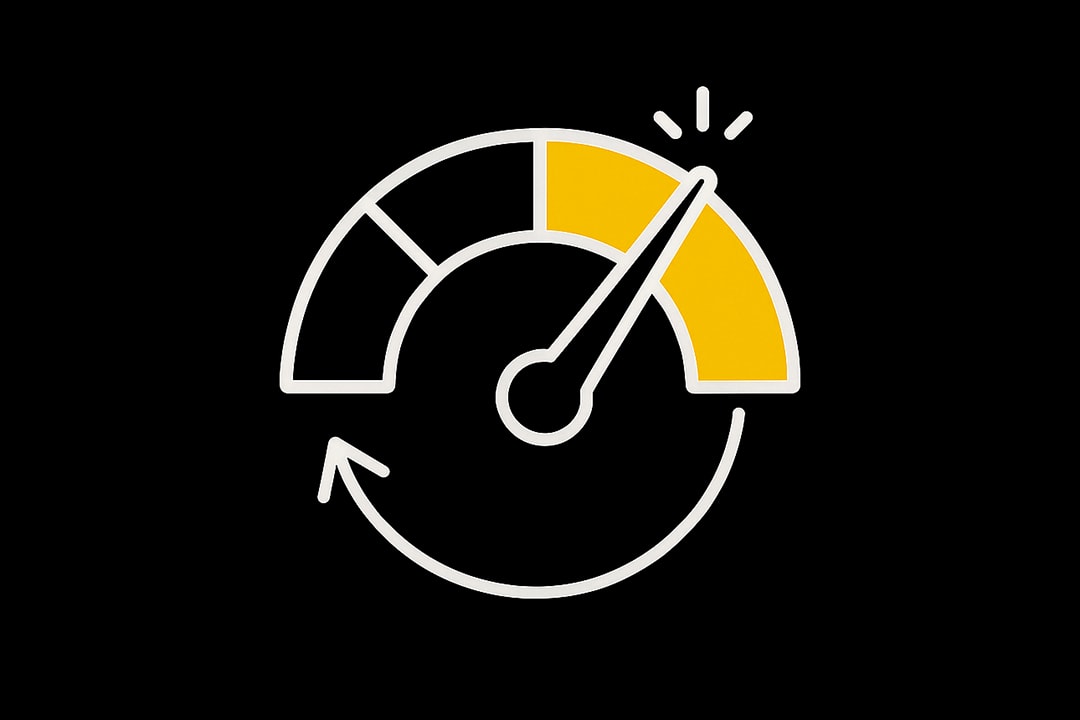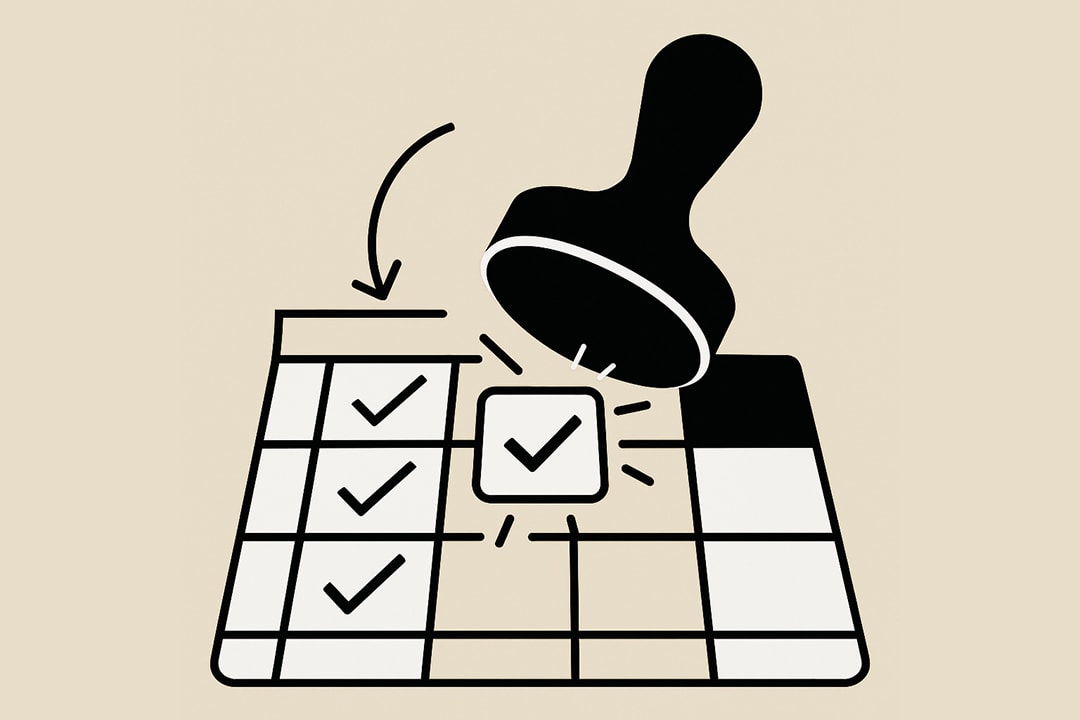How Top IT Leaders Are Designing the Future-Proof Tech Stack for 2025
Discover why modern IT teams are rethinking their entire tech stack for 2025. Learn the strategies, frameworks, and technical best practices winning organizations use to build secure, agile, and resilient IT foundations—backed by data and insights from industry leaders and analysts.

Why today’s IT stack demands a new blueprint
It’s 2025, and the IT landscape doesn’t just look different, it feels different. The tech stack that once powered reliable business-as-usual has become a patchwork quilt, stretched thin by complexity and stitched together by necessity. A new blueprint isn’t a luxury for IT leaders; it’s a non-negotiable requirement for survival, growth, and sanity.
What’s driving the urgency for change
The pace of change in enterprise IT has shifted from brisk to relentless. AI isn’t just a shiny add-on; it’s a fundamental layer in the stack, now affecting everything from security to business intelligence. According to IDC, enterprise spending on AI-centric systems is climbing at a 27% CAGR, with AI-driven platforms becoming table stakes for competitive organizations.
And it’s not just about tools—AI is reshaping how IT teams work, how threats are detected, how data is managed, and how business value is measured.
Cloud computing, once a bold choice, is now the baseline. Nearly 90% of large enterprises have adopted or are planning for multi-cloud management strategies (IDC FutureScape Cloud 2025). The hybrid stack—spanning on-prem, multiple clouds, and increasingly, the edge—is the new normal. The days of “pick a cloud and call it done” are over. Now, it’s about portability, governance, and keeping cost and complexity in check.
Cybersecurity, meanwhile, demands a complete rethinking. Zero Trust is not a future vision—82% of global enterprises are already deploying or piloting Zero Trust architectures (CompTIA). Security is no longer about castle walls; it’s about granular, identity-first controls and resilience.
The expectation isn’t that breaches won’t happen, but that business can continue even when they do. In fact, organizations deploying security AI and automation save on average $3.05M per breach (IBM).
The real-world tensions underneath
It’s not just technology pushing change, though. Budgets are scrutinized like never before. The “do more with less” mantra, once a groan-worthy cliché, now feels like a governing law. Tech debt from years of bolt-ons and quick fixes is catching up.
70% of IT leaders rank “modernizing legacy infrastructure” as a top-3 priority (Gartner), but the reality of untangling decades-old systems—without breaking what keeps the lights on—is daunting.
There’s also the human side. Technical teams are under pressure from every direction: executive demands for innovation, board-level scrutiny over security, and front-line users who expect instant, seamless digital experiences. At the same time, the war for skilled talent (especially in AI, cloud, and cybersecurity) is fierce. Automation can help, but only if the stack is built to support it.
Data is another flashpoint. AI and analytics have no value without clean, governed, accessible data. 72% of organizations say data quality and readiness are now their biggest roadblocks to digital success (MIT Sloan). The old “store everything, sort it later” approach is dead weight; the modern stack must support real-time, decentralized data flows securely and at scale.
Why the old playbook fails
The traditional approach—layer on more tools, patch the gaps, trust annual refreshes to keep pace—has hit its limit. It leads to stack sprawl, cost overruns, and a brittle foundation that can’t keep up with regulatory, security, or business demands. According to Forrester, stack optimization and vendor consolidation are now C-level imperatives, not just “good to have.”
The blueprint for 2025 is composable, modular, and built for continuous modernization. It’s not just about picking the right technologies—it’s about integrating them in a way that balances innovation with risk, agility with governance, and business value with operational reality.
As the pressure mounts and the stakes rise, the question becomes less about whether to change and more about how to architect a stack that’s actually built for what’s next. The answer isn’t a one-size-fits-all prescription, but there are patterns emerging among IT organizations that are not just keeping up—they’re pulling ahead. The next step is understanding how the best leaders are building stacks that are truly future-proof.
How the best IT leaders build future-proof stacks
Building a tech stack that can keep pace with 2025’s demands isn’t about chasing trends or buying every shiny new tool. The best IT leaders know that future-proofing is a discipline—a blend of architecture, pragmatism, and relentless focus on business impact. The stacks that win aren’t just modern; they’re composable, resilient, and ruthlessly aligned to real-world needs. Here’s how the most effective IT organizations are pulling it off.
How to architect for agility and scale
The foundation is clear: flexibility is non-negotiable. That means designing stacks that are API-first and service-oriented. 70% of new enterprise applications are now being built using microservices (IDC), and for good reason. Breaking monoliths into modular services is more than just a nod to modernity: it’s the only way to pivot quickly, scale painlessly, and avoid being locked into a single vendor or platform.
Hybrid and multi-cloud are no longer edge cases. 90% of large organizations now operate across more than one public cloud (IDC FutureScape Cloud 2025). Best-in-class teams treat cloud like a utility: use what’s needed, where it’s needed, with portability and governance baked in. Edge computing and IoT are operational lifelines, enabling real-time decision-making and process automation on the shop floor or in the store.
The strategy: Build on containers (think Kubernetes or OpenShift), manage APIs like assets, and use orchestration to keep complexity in check. Version everything, automate deployments, and design for rollback and failover from day one.
How to make AI and automation the stack’s core
AI isn’t just an overlay; it’s a structural layer. The most advanced IT teams embed AI/ML into their operations, security, and analytics pipelines. Enterprise AI spending is rising at 27% CAGR, with AIOps adoption up 20% year-over-year (Gartner). Agentic AI—autonomous agents that handle everything from incident triage to predictive maintenance—are moving from pilots to production.
AIOps platforms (like DataDog, Splunk, or ServiceNow) aren’t optional for organizations with real scale. They’re what allow IT to move from firefighting to foresight—spotting issues before they blow up, automating root cause analysis, and even self-healing infrastructure when things go sideways.
Best practice: Integrate AI into monitoring, incident response, and business process automation. Use unified platforms to cut through noise and drive faster, smarter decisions. Don’t bolt AI on, bake it in.
How to modernize without breaking the business
Legacy tech isn’t just a nuisance; it’s the number one anchor on agility. Yet “rip and replace” rarely works. The best leaders take a phased, API-driven approach: expose legacy systems via secure APIs, decouple critical business logic into microservices, and migrate workloads incrementally to the cloud.
58% of IT decision-makers now rate legacy modernization as a top-3 stack priority, but only 19% attempt full-stack rewrites (Gartner). The rest succeed by layering modernization on a bedrock of stability.
Data mesh and data fabric architectures are gaining traction—60% of data-mature organizations are now implementing them—because they enable decentralized analytics and real-time data sharing without sacrificing governance (Gartner). This means every business unit can move at its own speed, securely, with trusted data.
FinOps isn’t just a finance problem anymore. As cloud and SaaS spending spiral, the best-run shops integrate cost governance directly into the stack. Real-time visibility, chargeback models, and automated optimization are the new standard.
The playbook for IT leaders who want to stay ahead
- Design for modularity. Build with APIs and microservices, not monoliths.
- Go hybrid and multi-cloud. Treat cloud as a toolkit, not a destination.
- Automate relentlessly. Use AIOps and agentic AI to eliminate toil.
- Modernize methodically. Layer APIs onto legacy, migrate in phases, and measure relentlessly.
- Decentralize data, centralize governance. Data mesh/fabric architectures with strong controls.
- Bury tech debt before it buries you. Stack consolidation and FinOps are not optional.
The IT teams pulling ahead aren’t just adopting new tech, they’re engineering for change itself. The result is a stack that thrives on disruption. And that’s what separates tomorrow’s leaders from those stuck managing yesterday’s problems.
Why security and resilience are the new stack foundations
If the past few years have taught IT leaders anything, it’s that the only certainty is uncertainty, especially when it comes to security. The modern tech stack, no matter how agile or data-rich, is little more than an exposed nerve without a security posture that is both proactive and resilient. In 2025, stack design starts and ends with the assumption that threats are always present, breaches are inevitable, and downtime is intolerable.
How Zero Trust and resilience change the rules
The old perimeter model is obsolete. With remote work, SaaS sprawl, hybrid clouds, and IoT multiplying attack surfaces, Zero Trust has gone from best practice to baseline. 82% of enterprises are already deploying or piloting Zero Trust architectures (CompTIA), and the laggards are playing with fire.
Zero Trust means authenticating everything, authorizing everything, and assuming every device, user, and API can be compromised. This isn’t about paranoia—it’s about pragmatism.
The stack must enforce granular, context-aware controls across all layers: identity, network, data, and application. Leading organizations use identity platforms like Okta or Azure AD, endpoint and network segmentation, and real-time monitoring to close gaps that used to be “someone else’s problem.”
But security alone isn’t enough. The threat landscape is evolving faster than any vendor’s patch cycle. Ransomware, supply chain attacks, and AI-powered exploits have made it clear: prevention will eventually fail.
The best IT leaders are therefore engineering resilience—designing for rapid detection, automated containment, and fast recovery. Organizations that fully deploy security AI and automation save an average of $3.05 million per breach and recover 74 days faster than those who don’t (IBM).
How to bake in compliance and sustainability
Regulatory pressure is everywhere—GDPR, HIPAA, PCI DSS, and a growing patchwork of state and industry mandates. Compliance isn’t just a checkbox or a quarterly headache; it’s a design principle. The modern stack must have controls, auditability, and reporting capabilities woven through every component. Centralized logging, immutable audit trails, and automated compliance checks are the new normal.
Sustainability is quickly joining compliance and security as a design driver. Data centers now account for up to 3% of global energy consumption, and boards are asking tough questions about carbon impact. Forward-thinking IT teams are prioritizing green cloud regions, energy-efficient hardware, and workload optimization as part of their resilience playbook—not just for the environment but for regulatory readiness and cost control (McKinsey).
How security and resilience drive stack strategy
The implications for stack design are immediate and non-negotiable:
- Identity is the new perimeter. Every service, user, and device gets least-privilege, context-aware access.
- Security is embedded, not bolted on. DevSecOps, automated patching, and integrated threat intelligence are standard, not extras.
- Observability is mandatory. Unified monitoring and fast, actionable insights mean threats are caught before they become disasters.
- Resilience is engineered in. Immutable backups, failover strategies, and tested incident response plans are part of the stack’s DNA.
- Cost and risk are managed together. Security and resilience investments are mapped to real business impact, not just technical metrics.
The best IT leaders know that security is no longer just a technical concern—it’s a business differentiator and a board-level priority. Resilience isn’t about avoiding every failure; it’s about ensuring the business bounces back before anyone notices. The stacks that get this right aren’t just protected—they’re unstoppable. And as the next wave of disruption approaches, that’s the foundation every IT team needs.
What winning IT teams do differently
There’s no shortage of technology out there—what sets high-performing IT teams apart isn’t just what they buy, but how they build, lead, and evolve their stacks. The difference shows up in the way these teams balance relentless change with operational discipline, connect technical choices to business value, and treat adaptability as a core competency, not a catchphrase.
How leaders turn technical choices into business value
Winning teams don’t build stacks in isolation from business priorities—they run IT as a product, not a project. This means cross-functional teams that work shoulder-to-shoulder with business units, obsessing over outcomes, not just uptime. Their blueprints are driven by clear KPIs: faster time-to-market, higher customer retention, measurable cost avoidance, and visible risk reduction.
Stack consolidation is a recurring theme. These teams proactively hunt down tech debt, rationalize overlapping tools, and standardize on platforms that can scale. According to Forrester, stack optimization is now a strategic priority for 83% of CIOs, not just a clean-up exercise for the off-season. The payoff is real: less complexity, lower operating costs, and fewer points of failure when things get hairy.
What the research says about tomorrow’s must-have tools
Tomorrow’s essential stack isn’t a secret—it’s emerging from patterns seen in organizations that consistently outpace their peers. They’re betting on:
- Unified cloud and hybrid management (think HashiCorp, VMware, or cloud-native platforms) for maximum flexibility and control.
- Modern data platforms like Snowflake, Databricks, or native hyperscaler offerings to support analytics, AI, and real-time business logic.
- Integrated security and identity solutions (Okta, CrowdStrike, Zscaler) that centralize controls and make Zero Trust real, not just aspirational.
- Automation and AIOps (ServiceNow, Datadog, Splunk) to free up human talent for higher-order work and increase reliability.
- Composability and API-first frameworks so the stack isn’t a monolith, but a toolkit ready to evolve as business needs shift.
A recurring finding: data readiness and observability are no longer “nice to haves.” MIT Sloan notes that 72% of organizations cite data quality and real-time visibility as the linchpin for successful AI, automation, and customer experience (MIT Sloan 2025 AI Trends). Leaders bake this into their stack from the start.
On the perennial debate of build vs buy, the consensus is pragmatic: build for differentiation, buy for everything else. And when it comes to modernization, the incremental approach—phased, API-driven, and always measurable—wins out over risky “big bang” rewrites.
How to future-proof your IT stack starting today
Winning teams never assume today’s stack is tomorrow’s answer. They normalize continuous modernization, allocating budget and resources for technical debt reduction and stack evolution as a standing agenda item, not a one-time project.
They put real muscle behind talent development, recognizing that the best automation and AI are only as good as the humans guiding them. Investment in upskilling, cross-training, and building true DevSecOps cultures is part of the playbook.
And perhaps most importantly, they treat agility, resilience, and sustainability as non-negotiable pillars—building stacks that are ready for regulatory shifts, cyber events, and whatever market volatility is coming next. The result? Teams that don’t just keep the business running—they help it thrive in the face of whatever comes next.
For IT leaders looking to join the ranks of these winning teams, it’s not about chasing every new technology. It’s about building a stack—and a culture—that’s engineered for change, measured by value, and resilient by design. The organizations that get this right aren’t just ready for the future—they’re out in front, shaping it.
FAQ
1. What are the essential components of a future-ready IT tech stack in 2025?
A modern IT stack should include hybrid and multi-cloud infrastructure, container orchestration (like Kubernetes), API-first architecture, advanced data platforms (data mesh/fabric), integrated AI/ML capabilities, Zero Trust security, automation tools (AIOps, RPA), and unified observability. These elements enable agility, resilience, and continuous modernization.
2. Why is Zero Trust security considered foundational for IT stacks now?
Zero Trust shifts security from network perimeter defenses to identity, access, and continuous verification at every layer. With hybrid work, multi-cloud, and expanding attack surfaces, Zero Trust helps organizations reduce risk, limit breach impact, and meet regulatory requirements.
3. How does AI and automation change IT stack design and operations?
AI and automation are now embedded into IT operations, security, and analytics. AIOps platforms help detect issues, automate responses, and optimize performance, while AI-driven analytics enable faster business insights. Automation reduces manual work, increases reliability, and frees up talent for higher-value tasks.
4. What strategies help organizations modernize legacy systems without major disruption?
Best practices include phased modernization using secure APIs, containerization, and microservices to decouple legacy components. Incremental migration to cloud and data mesh architectures allows for stability and continuous improvement while minimizing operational risk.
5. How do leading IT teams ensure their stack is resilient and cost-optimized?
Winning teams adopt FinOps (financial operations) for cloud cost control, automate monitoring and backups, and prioritize stack consolidation to reduce tech debt. They regularly test disaster recovery, invest in upskilling, and align IT metrics directly with business KPIs to drive measurable value.





